
Recently, deep generative models have achieved remarkable success in generating high-quality images from text prompts, in part due to the scaling of deep generative models to large-scale web datasets such as LAION. However, some significant challenges remain, preventing large-scale text-to-image models from generating images that are perfectly aligned with text prompts. For example, current text-to-image models often fail to generate reliable visual text and have difficulty with combined image generation.
Back in the field of language modeling, learning from human feedback has become a powerful solution for “aligning model behavior with human intent.” This type of method first learns a reward function designed to reflect what humans care about in the task through human feedback on the model output, and then uses the learned reward function through a reinforcement learning algorithm (such as proximal policy optimization PPO) to Optimize language models. This reinforcement learning with human feedback framework (RLHF) has successfully combined large-scale language models (such as GPT-3) with sophisticated human quality assessment.
Recently, inspired by the success of RLHF in the language field, researchers from Google Research and Berkeley, California, proposed a fine-tuning method that uses human feedback to align text to image models.

##Paper address: https://arxiv.org/pdf/2302.12192v1.pdf
The method in this article is shown in Figure 1 below, which is mainly divided into 3 steps.
Step one: First generate different images from a set of text prompts "designed to test the alignment of text to image model output". Specifically, examine the pretrained model's more error-prone prompts—generating objects with a specific color, number, and background, and then collecting binary human feedback used to evaluate the model's output.
Step 2: Using a human-labeled dataset, train a reward function to predict human feedback given image and text prompts. We propose an auxiliary task to identify original text prompts among a set of perturbed text prompts to more effectively use human feedback for reward learning. This technique improves the generalization of the reward function to unseen images and text prompts.
Step 3: Update the text-to-image model via reward-weighted likelihood maximization to better align it with human feedback. Unlike previous work that used reinforcement learning for optimization, the researchers used semi-supervised learning to update the model to measure the quality of the model output, which is the learned reward function.
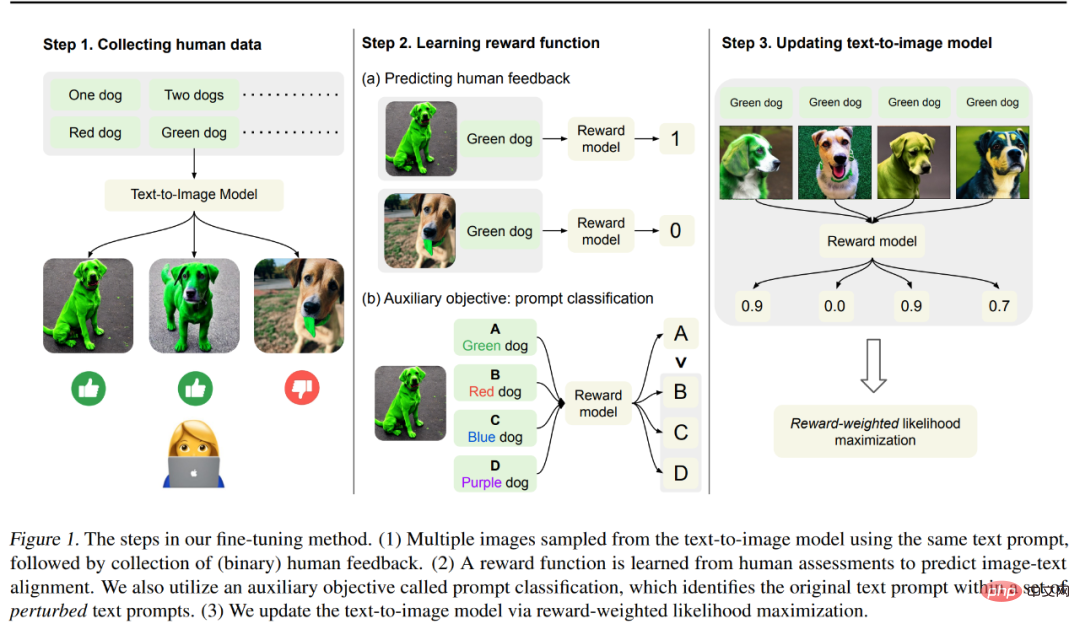
Researchers used 27,000 image-text pairs with human feedback to fine-tune the Stable Diffusion model, and the results show fine-tuning The latter model achieves significant improvements in generating objects with specific colors, quantities, and backgrounds. Achieved up to 47% improvement in image-text alignment at a slight loss in image fidelity.
Additionally, combined generation results have been improved to better generate unseen objects given a combination of unseen color, quantity, and background prompts. They also observed that the learned reward function matched human assessments of alignment better than CLIP scores on test text prompts.
However, Kimin Lee, the first author of the paper, also said that the results of this paper did not solve all the failure models in the existing text-to-image model, and there are still many challenges. They hope this work will highlight the potential of learning from human feedback in aligning Vincent graph models.

In order to align the generated image with the text prompt, this study performed a series of fine-tuning on the pre-trained model, and the process is shown in Figure 1 above. First, corresponding images were generated from a set of text prompts, a process designed to test various performances of the Vincentian graph model; then human raters provided binary feedback on these generated images; next, the study trained a reward model to predict human feedback with text prompts and images as input; finally, the study uses reward-weighted log-likelihood to fine-tune the Vincent graph model to improve text-image alignment.
Human Data Collection
To test the functionality of the Vincent graph model, the study considered three categories of text prompts: Specified count, color, background. For each category, the study generated prompts by pairing each word or phrase that described the object, such as green (color) with a dog (quantity). Additionally, the study considered combinations of three categories (e.g., two dogs dyed green in a city). Table 1 below better illustrates the dataset classification. Each prompt will be used to generate 60 images, and the model is mainly Stable Diffusion v1.5.
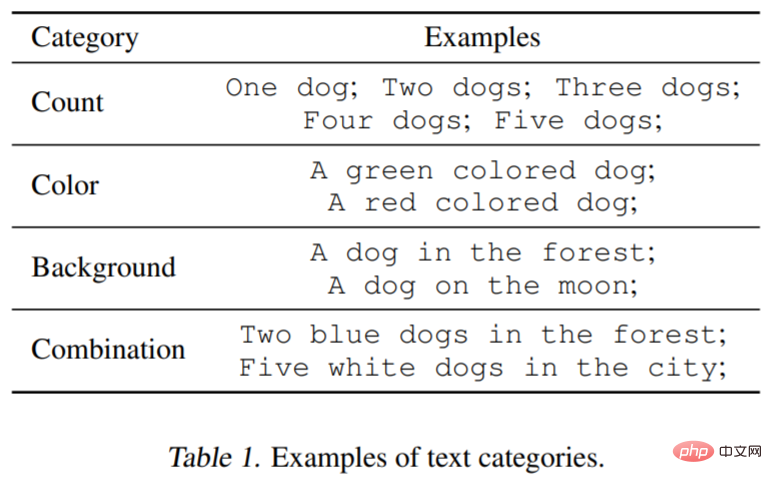
Human Feedback
Next comments Generated images for human feedback. Three images generated by the same prompt are presented to the labelers, and they are asked to evaluate whether each generated image is consistent with the prompt, and the evaluation criteria are good or bad. Since this task is relatively simple, binary feedback will suffice.
Reward Learning
To better evaluate image-text alignment, this study uses a reward function  To measure, this function can map the CLIP embedding of image x and text prompt z to scalar values. It is then used to predict human feedback k_y ∈ {0, 1} (1 = good, 0 = bad).
To measure, this function can map the CLIP embedding of image x and text prompt z to scalar values. It is then used to predict human feedback k_y ∈ {0, 1} (1 = good, 0 = bad).
Formally speaking, given the human feedback data set D^human = {(x, z, y)}, the reward function Train by minimizing the mean square error (MSE):
Train by minimizing the mean square error (MSE):

Previously, it has been Studies have shown that data augmentation methods can significantly improve data efficiency and model learning performance. In order to effectively utilize the feedback data set, this study designed a simple data augmentation scheme and an auxiliary loss that rewards learning. This study uses augmented prompts in an auxiliary task, that is, classification reward learning is performed on the original prompts. The Prompt classifier uses a reward function as follows:

##The auxiliary loss is:

#The last step is to update the Vincent diagram model. Since the diversity of the data set generated by the model is limited, it may lead to overfitting. To mitigate this, the study also minimized the pre-training loss as follows:
The experimental part is designed to test the effectiveness of human feedback participating in model fine-tuning. The model used in the experiment is Stable Diffusion v1.5; the data set information is shown in Table 1 (see above) and Table 2. Table 2 shows the distribution of feedback provided by multiple human labelers.
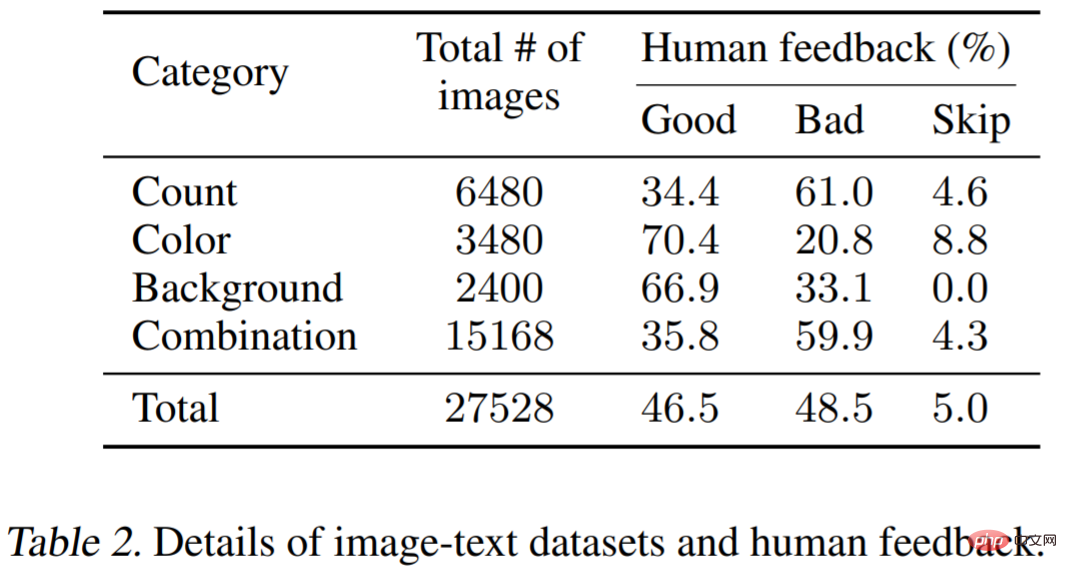
Human ratings of text-image alignment (evaluation metrics are color, number of objects). As shown in Figure 4, our method significantly improved image-text alignment. Specifically, 50% of the samples generated by the model received at least two-thirds of the votes in favor (the number of votes was 7 or more votes in favor). votes), however, fine-tuning slightly reduces image fidelity (15% vs. 10%).
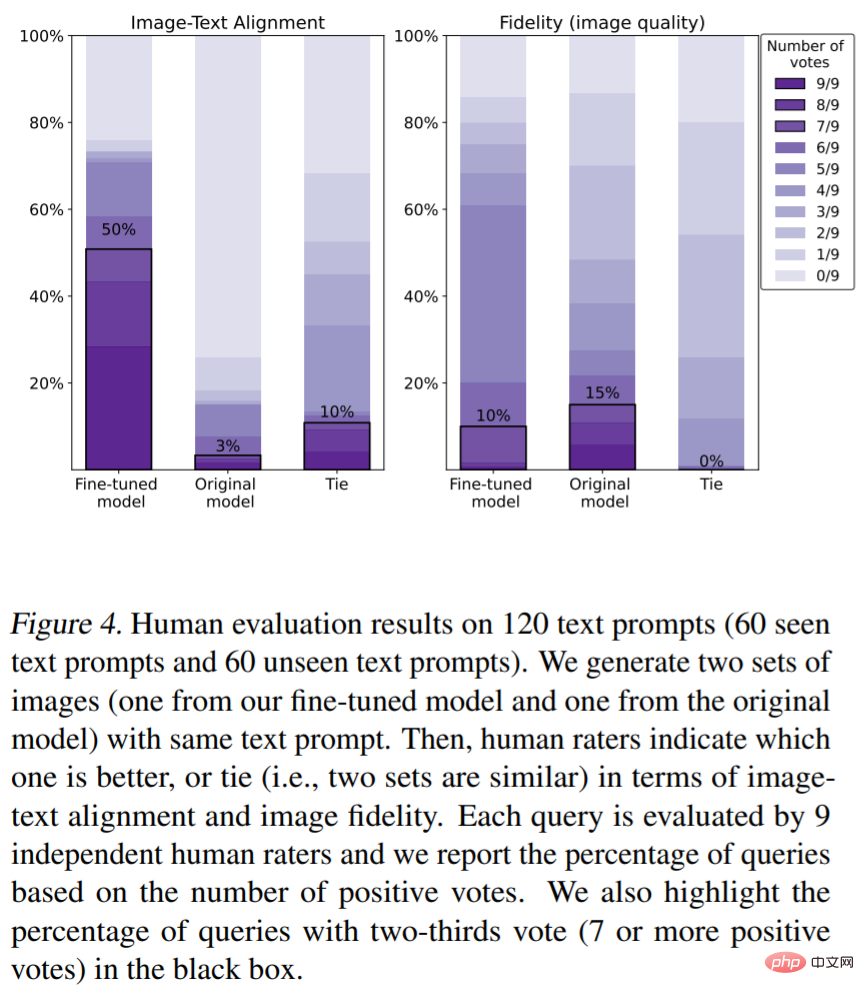
Figure 2 shows examples of images from the original model and our fine-tuned counterpart. It can be seen that the original model generated images that lacked details (such as color, background, or count) (Figure 2 (a)), and the image generated by our model conforms to the color, count, and background specified by prompt. It is worth noting that our model can also generate unseen text prompt images with very high quality (Figure 2 (b)).
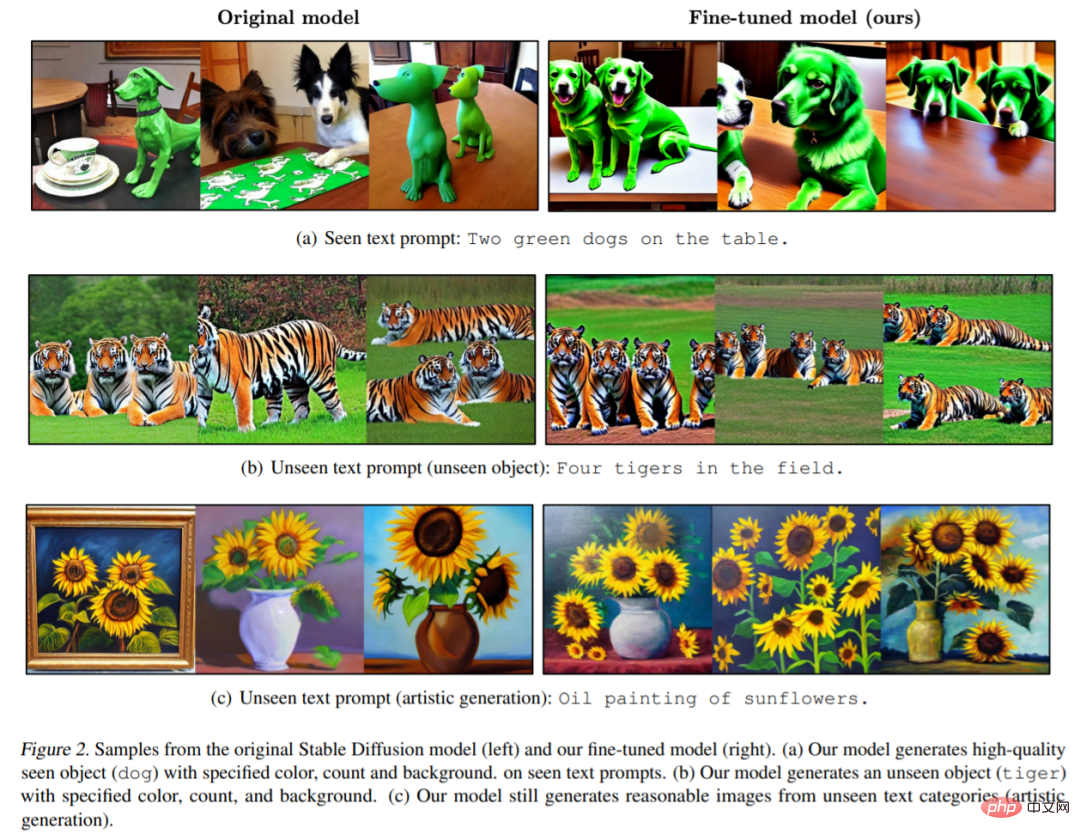
Reward the results of learning. Figure 3(a) shows the model’s scores in seen text prompts and unseen text prompts. Having rewards (green) is more consistent with typical human intentions than CLIP scores (red).
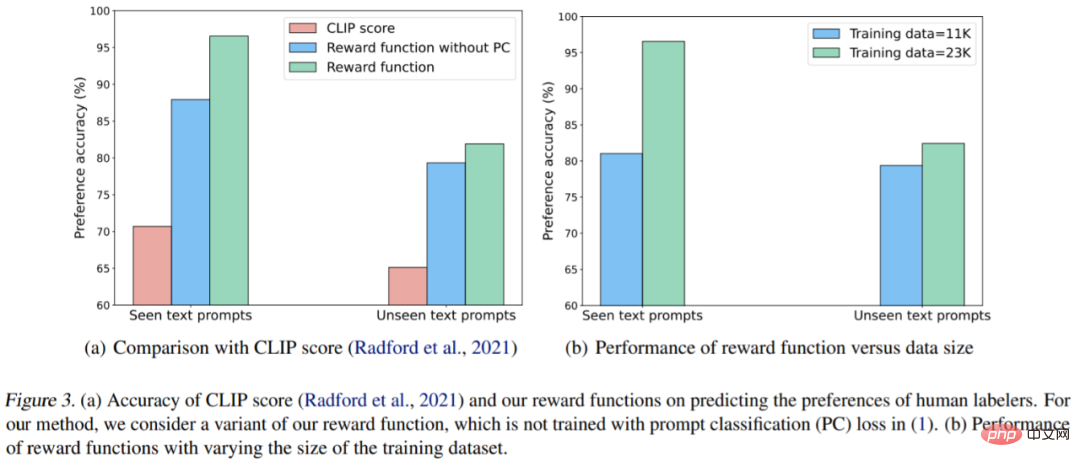
The above is the detailed content of Learning ChatGPT, what will happen if human feedback is introduced into AI painting?. For more information, please follow other related articles on the PHP Chinese website!
 What skills are needed to work in the PHP industry?
What skills are needed to work in the PHP industry?
 iexplore.exe
iexplore.exe
 How to set automatic line wrapping in word
How to set automatic line wrapping in word
 location.reload usage
location.reload usage
 stripslashes function usage
stripslashes function usage
 A memory that can exchange information directly with the CPU is a
A memory that can exchange information directly with the CPU is a
 The difference between linux and windows
The difference between linux and windows
 Yiooke wallet address
Yiooke wallet address
 What does it mean when a message has been sent but rejected by the other party?
What does it mean when a message has been sent but rejected by the other party?




